Five
CELEBRITY HEROES
AND FILM NOIR
In the western part of the Alabama Hills, one will find the locations known as Whitney Portal Road, Background Rocks, and Movie Road. It was here that famous favorite celebrities who served in the armed forces made films that will never be forgotten.
Humphrey Bogart was in the US Navy and can be seen in the 1941 classic High Sierra, filmed along Whitney Portal Road and Lone Pine. Desi Arnaz, who was a World War II veteran, can be seen in the 1953 film The Long, Long Trailer with Lucille Ball, also shot along Whitney Portal Road. Tyrone Power was a decorated US Marine Corps pilot who flew over Iwo Jima and starred in front of Background Rocks in the 1940 film Bringham Young and 1953’s King of the Khyber Rifles, also filmed along Whitney Portal Road.
Robert Ryan and Lee Marvin were in the Marines and starred alongside US Navy veteran Ernest Borgnine in the 1955 film Bad Day at Black Rock, which is a film location in this area near Movie Road. Kirk Douglas starred in the 1951 film Along the Great Divide and served in the US Navy as well. David Niven was at D-Day and is seen in the 1936 film Charge of the Light Brigade. Douglas Fairbanks Jr. was a commando in World War II who starred in Gunga Din, released in 1939. The RKO classic Gunga Din was filmed almost entirely in all areas of the Alabama Hills.
Edward G. Robinson served in World War I and starred alongside Glenn Ford, who served in World War II, Korea, and Vietnam. Both served in the US Navy and can be seen in the 1955 film The Violent Men with Barbara Stanwyck.
And Audie Murphy, the Medal of Honor recipient and soldier/cowboy in World War II, starred in the 1963 film Showdown and others that were filmed along Movie Road and elsewhere in the Alabama Hills.
Film noir is a genre of films that captures the imaginations of viewers by featuring men wearing fedora hats, cigarette-smoking femme fatales, dimly lit alleys, cliffs with winding roads, staircases, gumshoe detectives, gangsters, and plenty of locations filled with crime and suspense. Several film noir productions were filmed in the Alabama Hills, including The Hitch-Hiker (1953) and Bad Day at Black Rock (1955).
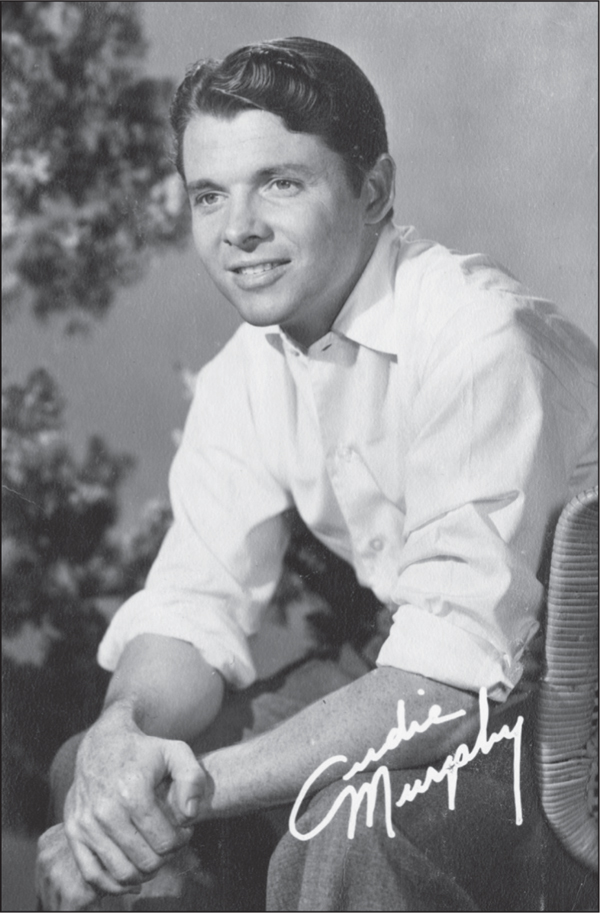
The highest-decorated soldier of World War II was Medal of Honor recipient Audie Murphy. Murphy starred most notably in Showdown (1963). In it, he can be seen galloping along Movie Road just as the Roman hero Russell Crowe does in Gladiator (2000). His personal pistol is on display at the film museum in Lone Pine, California, from the collection of Jim Phillips, who is a distant relative of Roscoe “Fatty” Arbuckle.
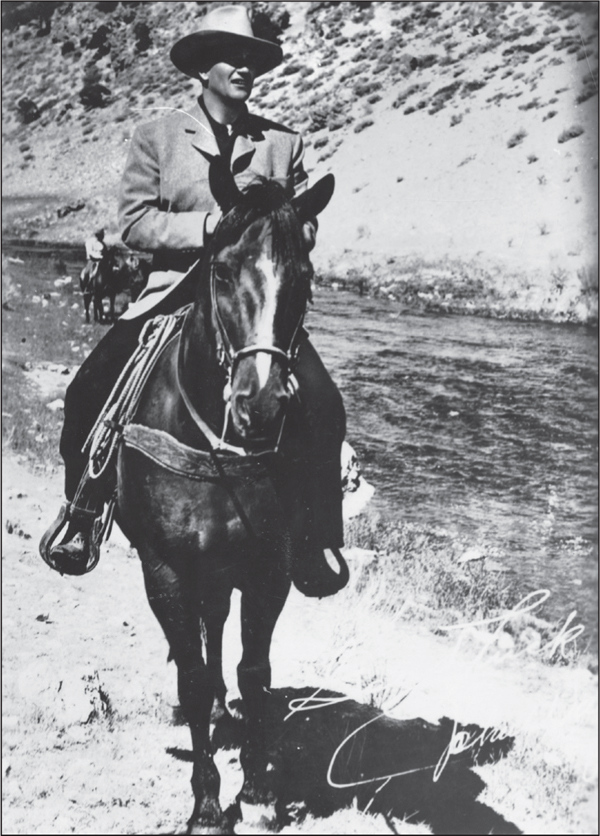
John Wayne, born Marion Morrison, filmed his last scene on Movie Road in late August 1978. It was a commercial for Great Western Savings Bank. His last movie was The Shootist (1976), filmed in Nevada. In it, he gives his horse Dollar to a young Ron Howard. Dollar was the real name of the last horse John Wayne owned. His first horse was named Bo Bo. After filming in the Alabama Hills, Wayne, like many actors, would return to the Hollywood studios. Near one of these studios, he would frequent a train car that had been converted into a restaurant called the Formosa Café, which still operates today. One evening after having dinner, he fell asleep in one of the booths. The staff did not want to wake him up, so they locked him in. The next morning when the staff returned, John Wayne had cooked breakfast as a thank-you. “The Duke,” as Wayne was known, is buried in Newport Beach, California. He lived there and owned an old World War II minesweeper converted to a pleasure boat named the Wild Goose.
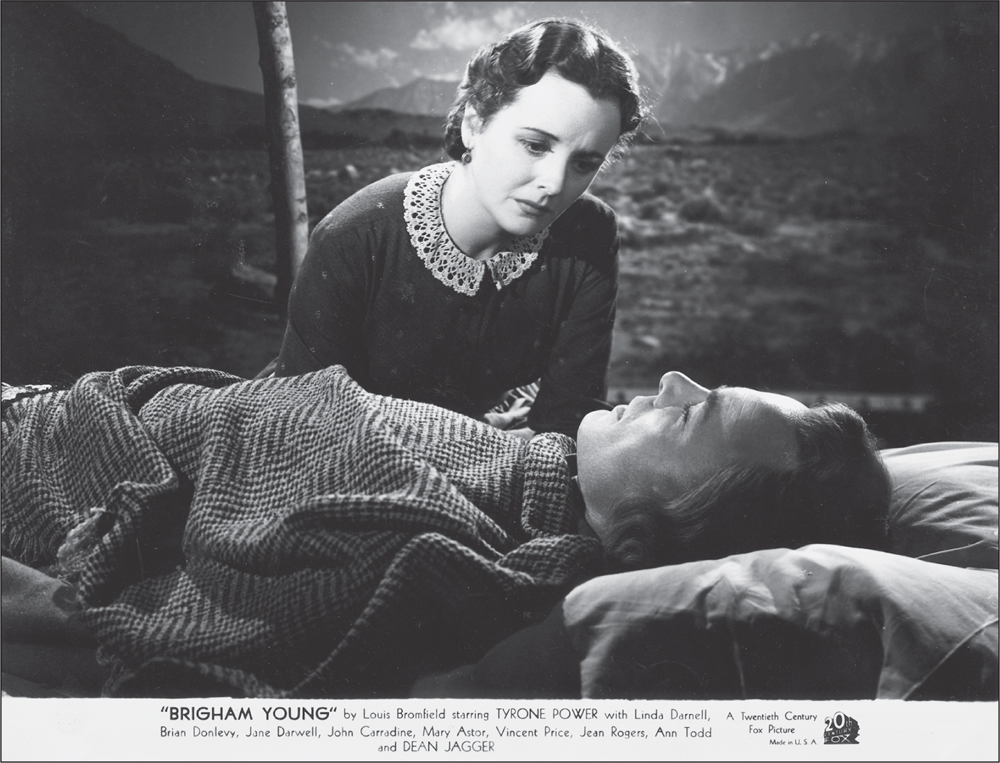
Brigham Young (1940) had an all-star cast that included Brian Donlevy, who was a World War I veteran, and John Carradine, father of famed Kung Fu master and actor David Carradine. Mary Astor from The Maltese Falcon and Vincent Price from House of Wax also starred alongside each other. Other stars included in this film were Linda Darnell, who later tragically died in a house fire while watching Star Dust, another movie she starred in that year, and Tyrone Power, who became a decorated US Marine Corps pilot during World War II and was involved at Iwo Jima. Tyrone Power and his wife, Annabella, rented and stayed at a house on Brewery Street in the town of Lone Pine during the filming. This film location is out on Movie Flats; the Sierras are seen in background.
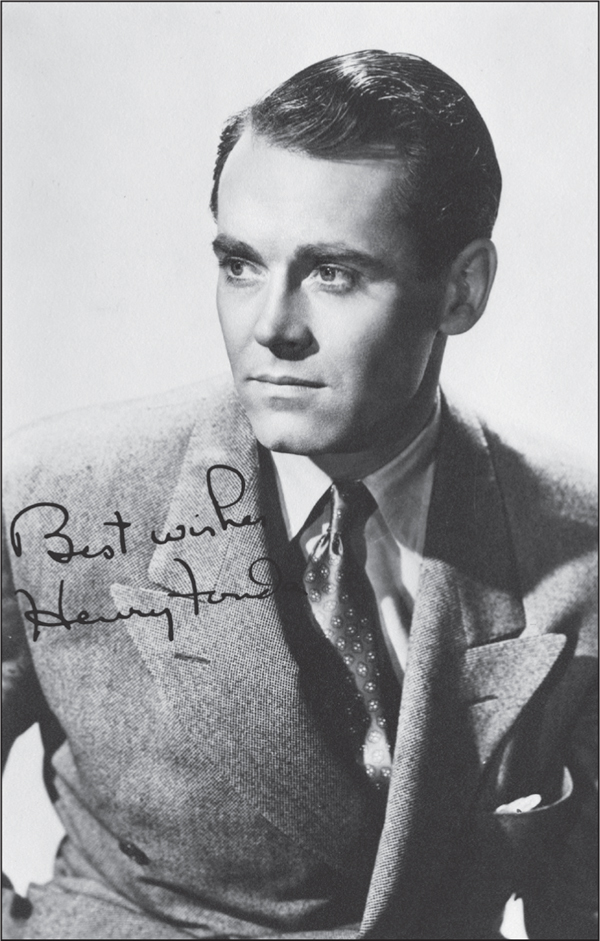
Here is a nice photograph of Henry Fonda, who starred in How the West Was Won. Fonda served in the US Navy and won a Bronze Star. He represented many celebrities who volunteered for World War II and contributed to many organizations for veterans.
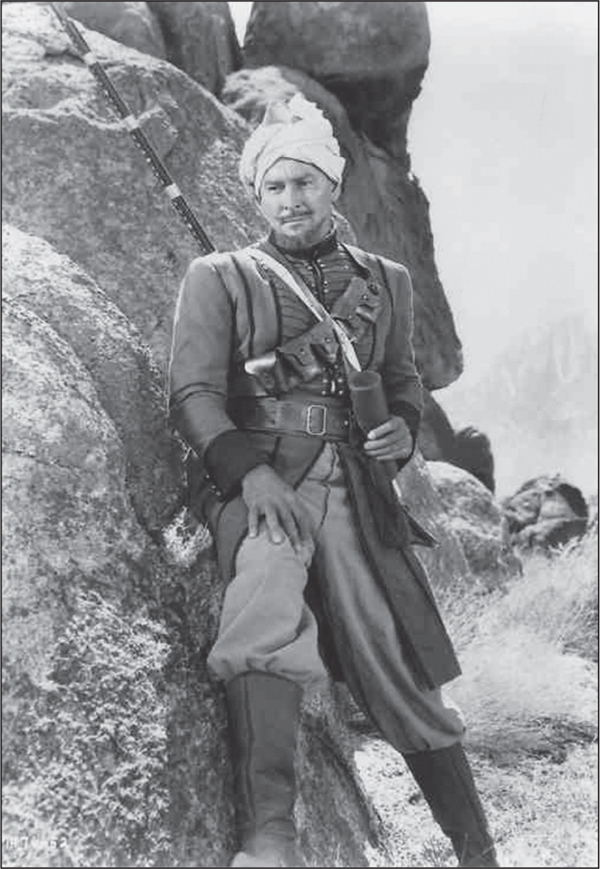
Errol Flynn was born on June 20, 1909, in Australia. He is seen here starring in Kim (1950), which was filmed partly in the Alabama Hills due to its resemblance to the Khyber Pass in Afghanistan. Flynn once ate camel dung on the set, according to Dean Stockwell. Having become a naturalized US citizen in 1942, he tried joining the Army Air Corps, the Army, and the Navy during World War II but was rejected because he had had tuberculosis and malaria as a child. Flynn also suffered congestive heart disease, which caused Warner Bros. much difficulty in insuring him for many of his films. Flynn also loved animals, including dogs and horses, and was an early animal activist.
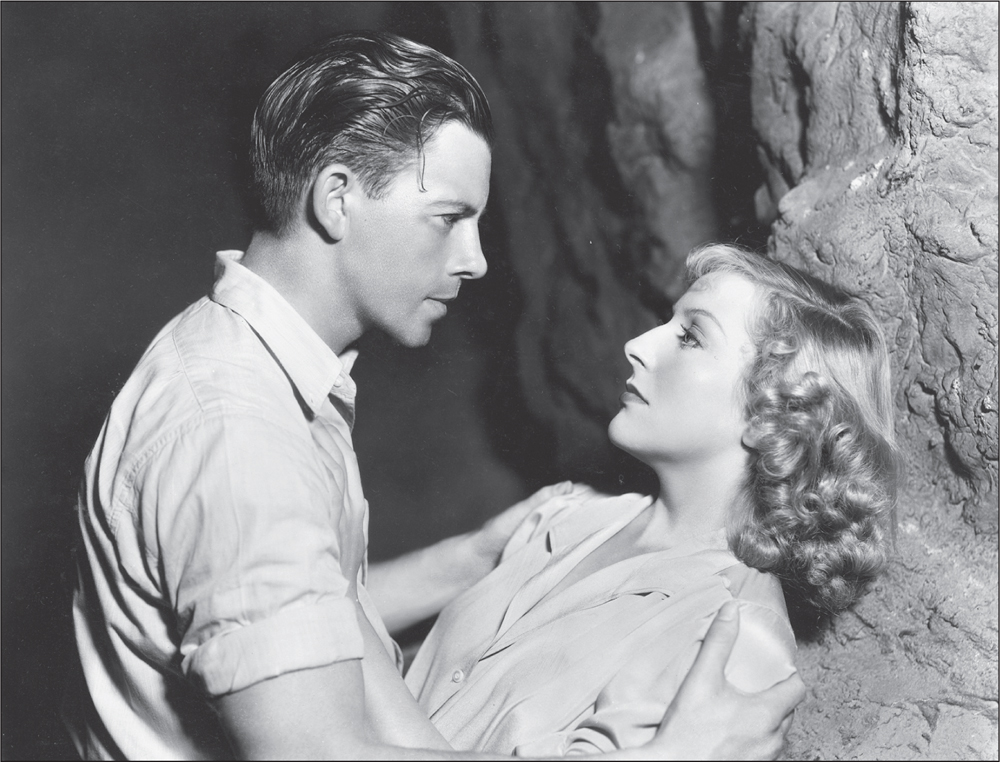
This image shows a scene from an early film noir, Woman Trap (1936). It is about jewels thieves, bandits, and hot pursuits and shows great locations around Lone Pine and the Alabama Hills.
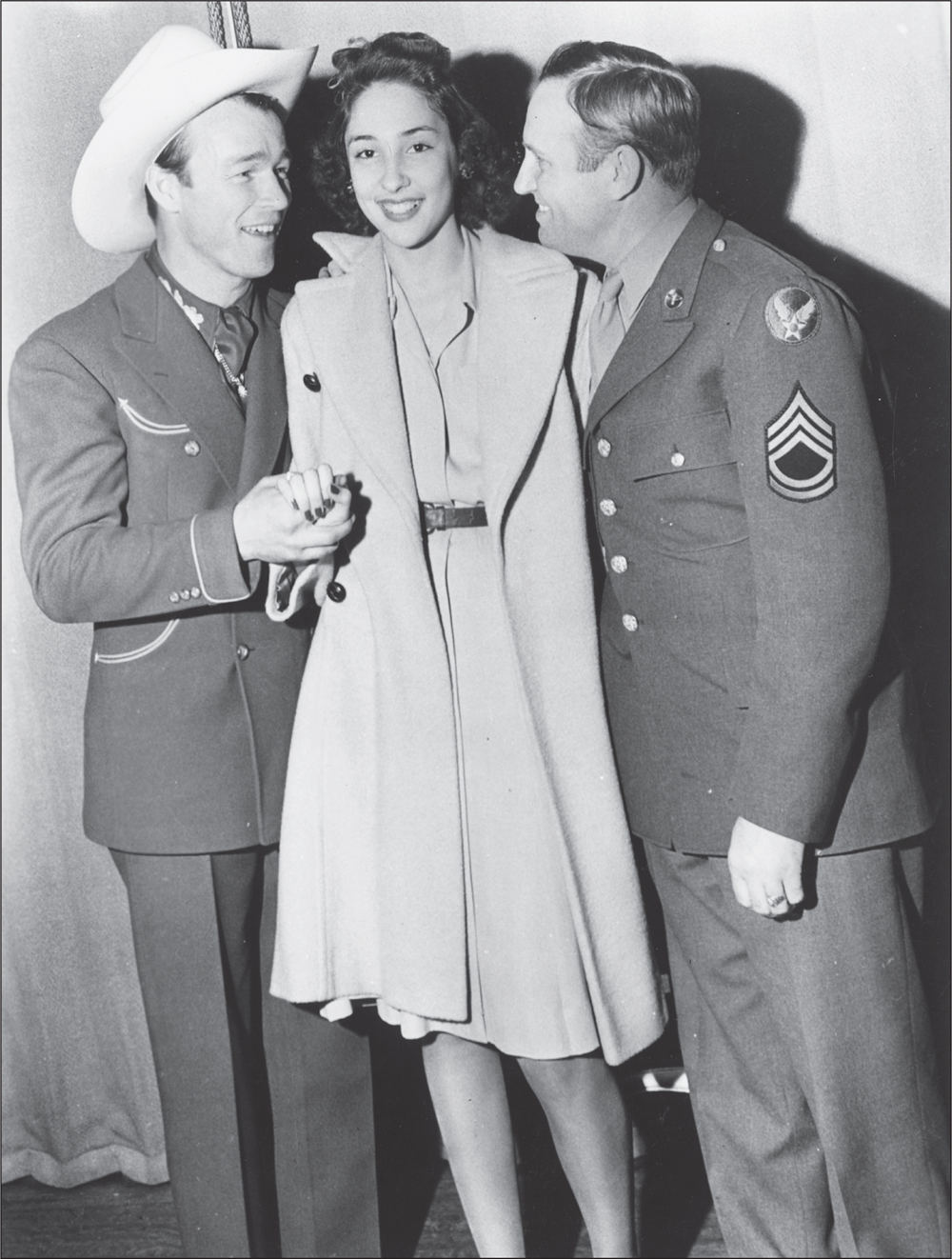
This wonderful photograph shows Gene Autry (right) and Roy Rogers entertaining a nice young woman during the war years. Autry served in the Air Transport Command and went on to own the baseball team now called the Los Angeles Angels of Anaheim. He built Anaheim Stadium in 1964. There is a statue of him as a cowboy at the stadium in Anaheim, California. Roy Rogers dedicated the monument on Movie Road at the first film festival commemorating film production in the Alabama Hills.
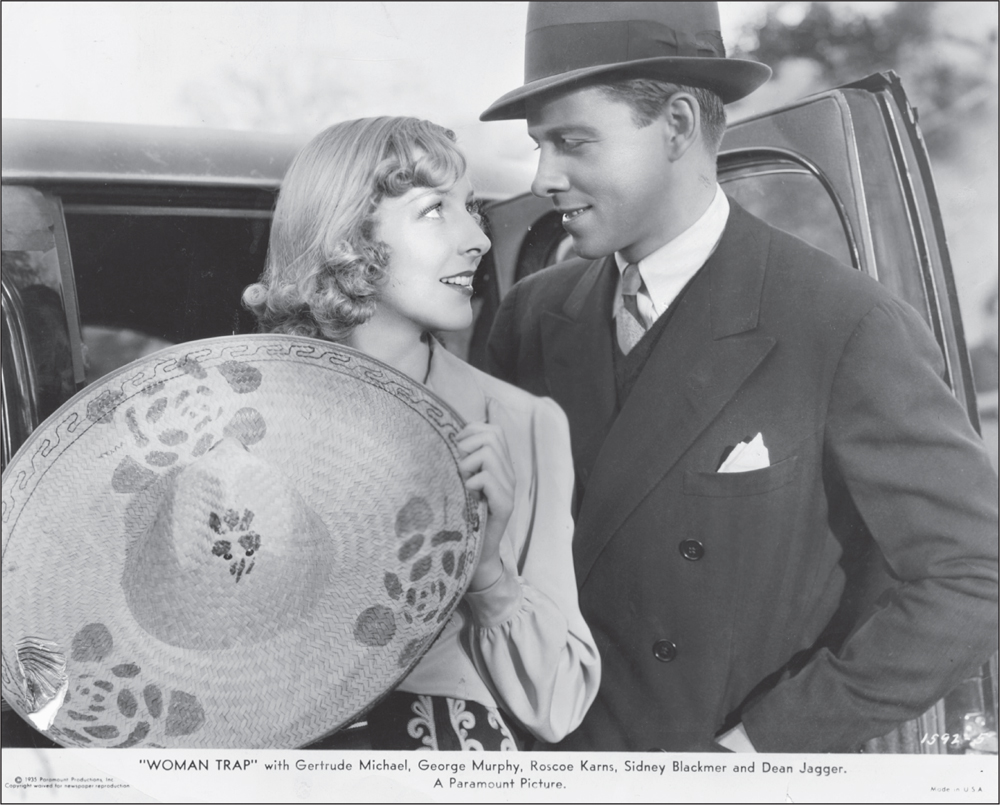
Here is another scene from Woman Trap (1936), starring Gertrude Michael and George Murphy. The hideout and Mexican town in the film are actually the old Anchor Ranch, and at the end of the film, local California Highway Patrol officers are shown.
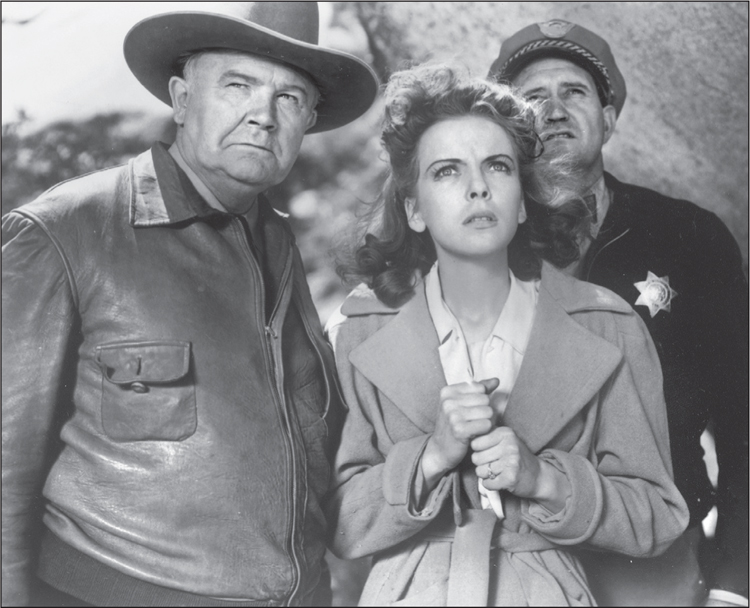
High Sierra (1941) was another film noir that remains a favorite of movie history. This scene shows Ida Lupino looking with anticipation to see what Bogart’s fate will be in the film. Ida Lupino enjoyed the location and returned to Lone Pine to shoot The Hitch-Hiker (1953).
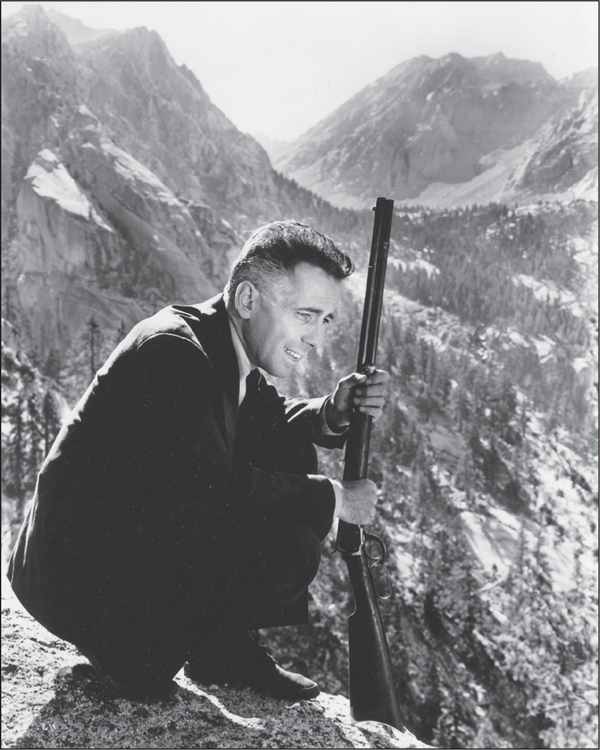
This publicity shot shows Bogart atop Whitney Portal Road. Raoul Walsh directed High Sierra, as well as many other films. The screenplay of High Sierra was written by W.R. Burnett and John Huston, who went on to direct Treasure of Sierra Madre (1948).
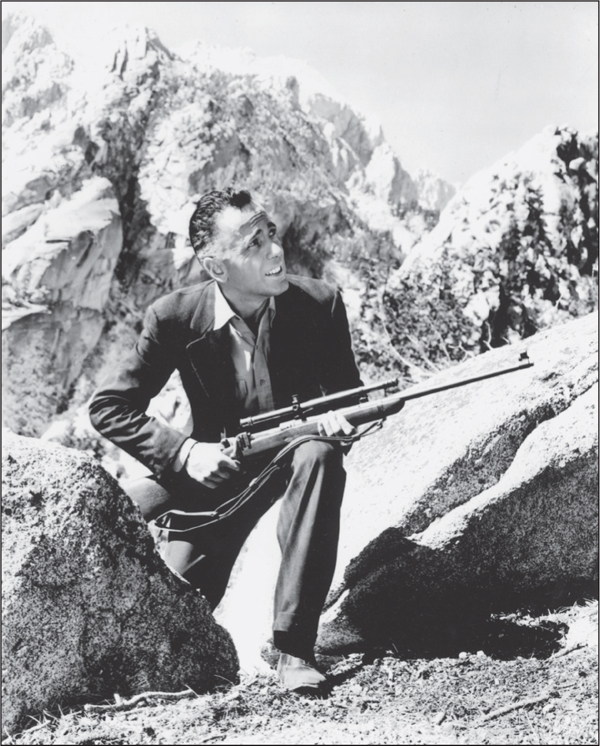
This rare photograph shows Bogart awaiting his fate after fleeing from the Alabama Hills up Whitney Portal Road. The getaway car (a 1937 Plymouth Coupe) that Humphrey Bogart drives in High Sierra can be found at the Lone Pine Museum. Edward G. Robinson, Paul Muni, George Raft, and James Cagney all turned down Bogart’s part. During filming, Bogart was under suspicion for being a Communist. Colorado Territory (1949) was a Western remake of this film with Virginia Mayo but was not shot in the Alabama Hills. I Died a Thousand Times (1955) with Jack Palance is another remake of the film.
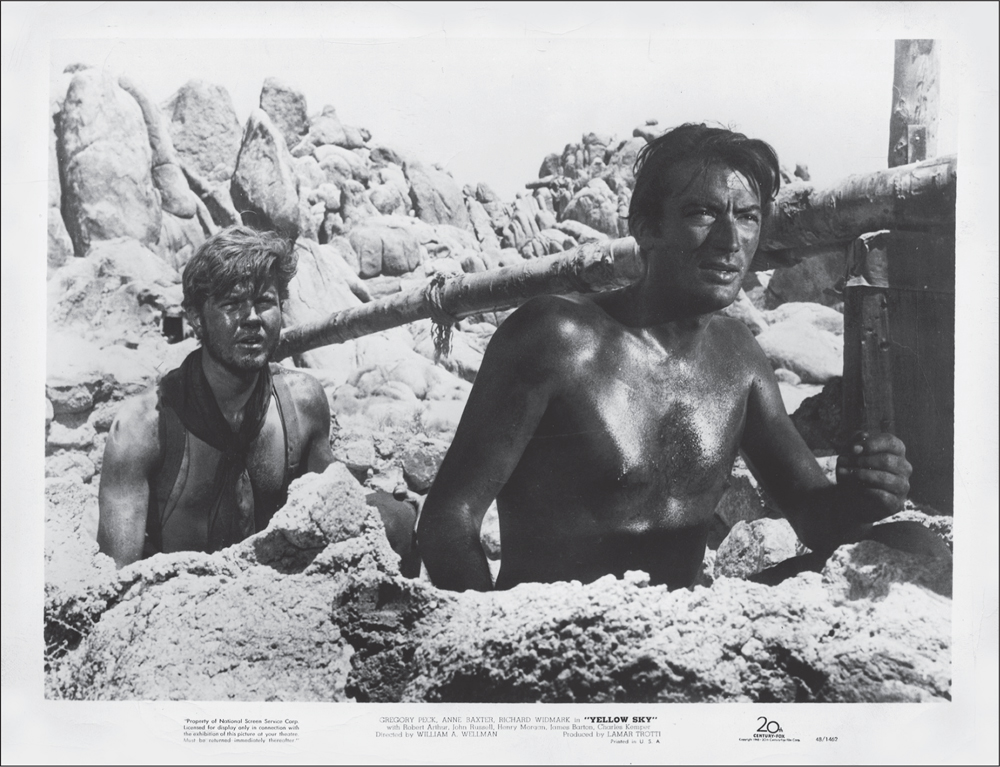
Gregory Peck (right) is shown here in Yellow Sky (1948), taking cover behind aristae that can still be seen between Movie Road and the Ruiz Hills area of the Alabama Hills, offering the best evidence of early filmmaking. According to Dave Holland, a local was paid to dismantle the set but for whatever reason left this piece of movie history.
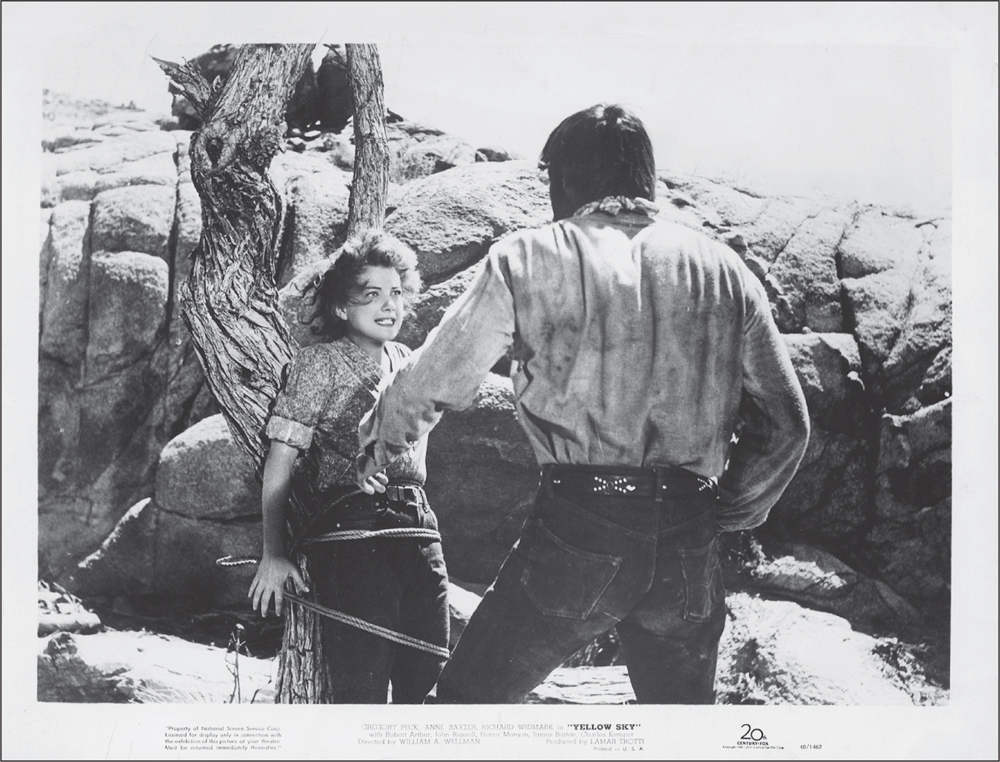
This action scene from Yellow Sky (1948) shows Anne Baxter and Gregory Peck. Gregory Peck’s role in this film goes from bad guy to good guy, and the movie is considered one of the better Westerns ever filmed in the Alabama Hills. In one scene, Gregory Peck goes in a saloon, and the bartender is Victor Killian. Killian was found murdered at the Lido Apartments after visiting the Chinese Theatre in Hollywood; some say the theater is haunted by his spirit.
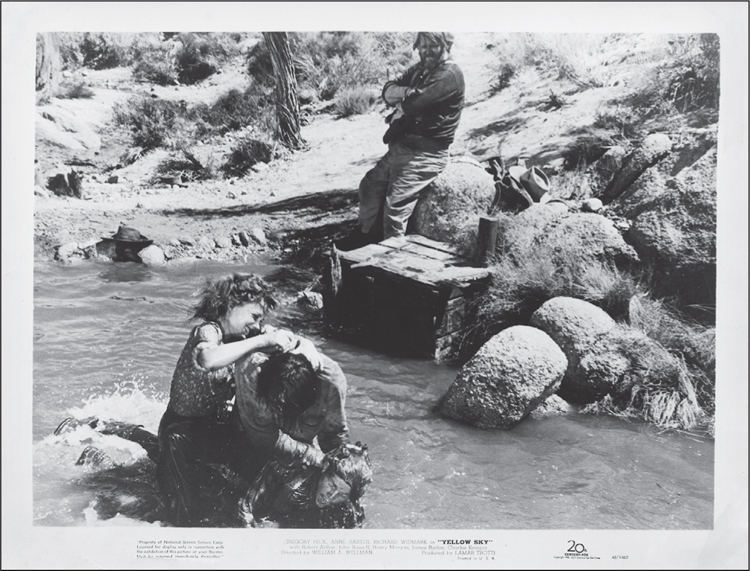
This action scene from Yellow Sky (1948) shows a tough Anne Baxter, whose character defends her grandfather’s fortune and her home. This location was a dry depression that was filled with water to create a small creek bed.
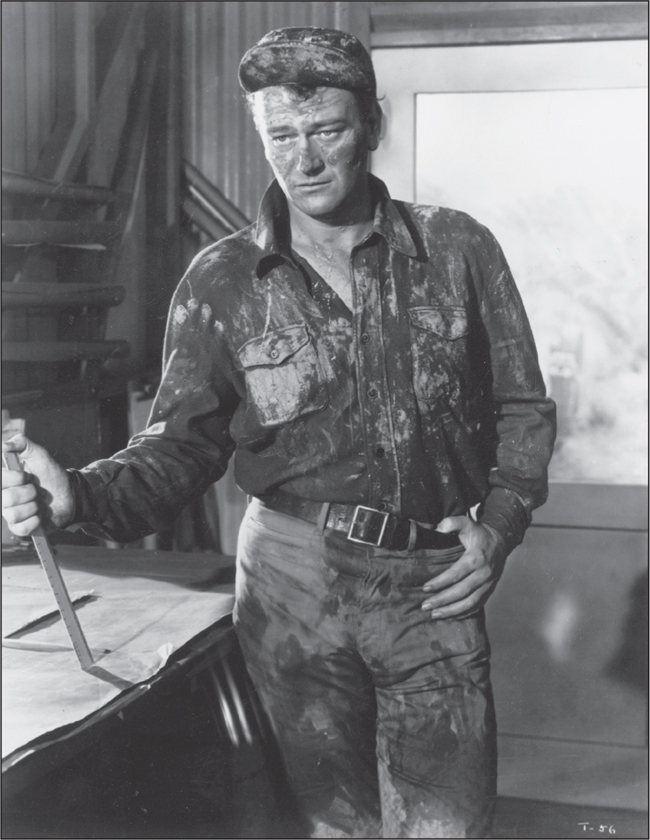
John Wayne is seen working hard on the set of Tycoon (1947). It was filmed in the Ruiz Hills area of the Alabama Hills, and where the mine was in the film, traces of the set can still be seen.
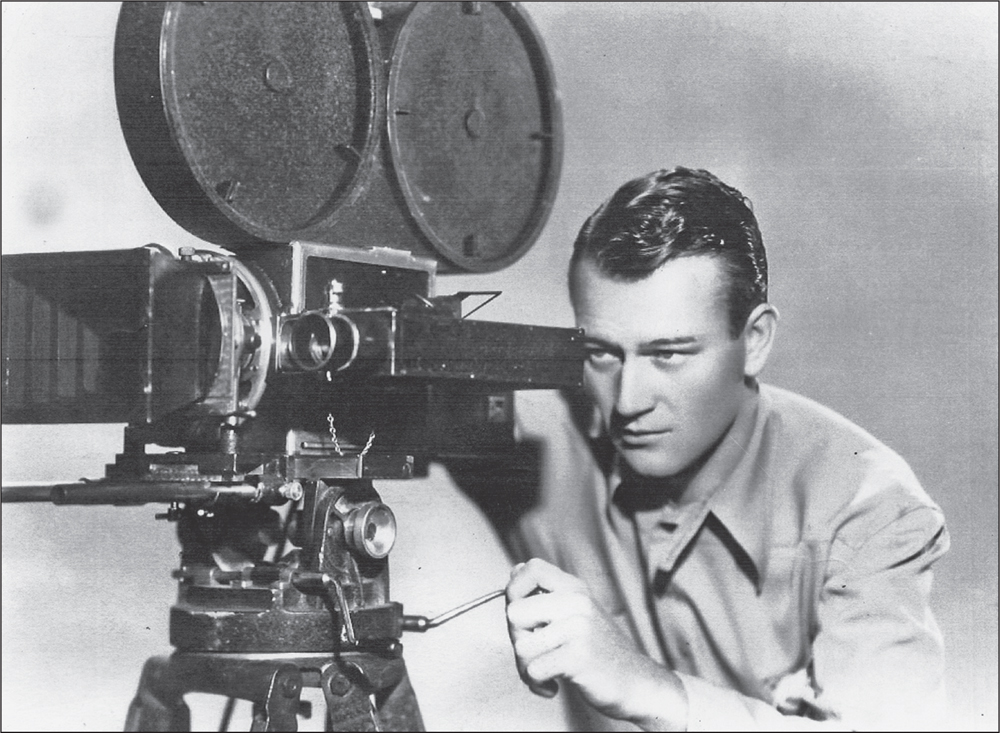
Here is John Wayne in I Cover the War, a 1937 Universal production. All of the members of the filming crews must be remembered, too; they worked very hard to get it right onset, as portrayed by Wayne in this fictional role. This includes everything from the miniature sets, costumes, makeup, props, and set designs to all the B actors, extras, directors, and sound engineers—and everyone else who creates these movies.
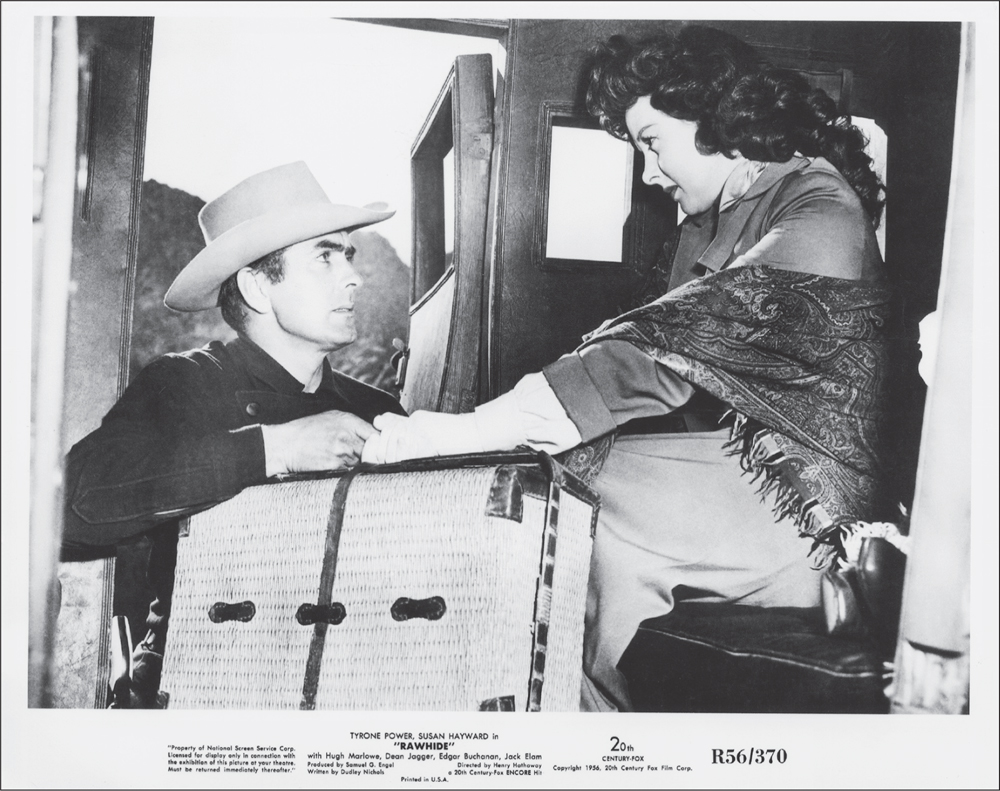
Rawhide (1951) starred Tyrone Power and Susan Hayward. Director Henry Hathaway filmed a burial scene similar to Lives of a Bengal Lancer (1936). The burial scene in Rawhide is along Movie Road, and the road looks the same as it did when it was filmed. Twin children were used during filming; one would cry for some scenes as needed, and the other would not cry. Power often pretended to be a local in town, posing as a hotel clerk as a practical joke to see if he would be noticed. Hayward was rumored not to wear undergarments while relaxing in town.
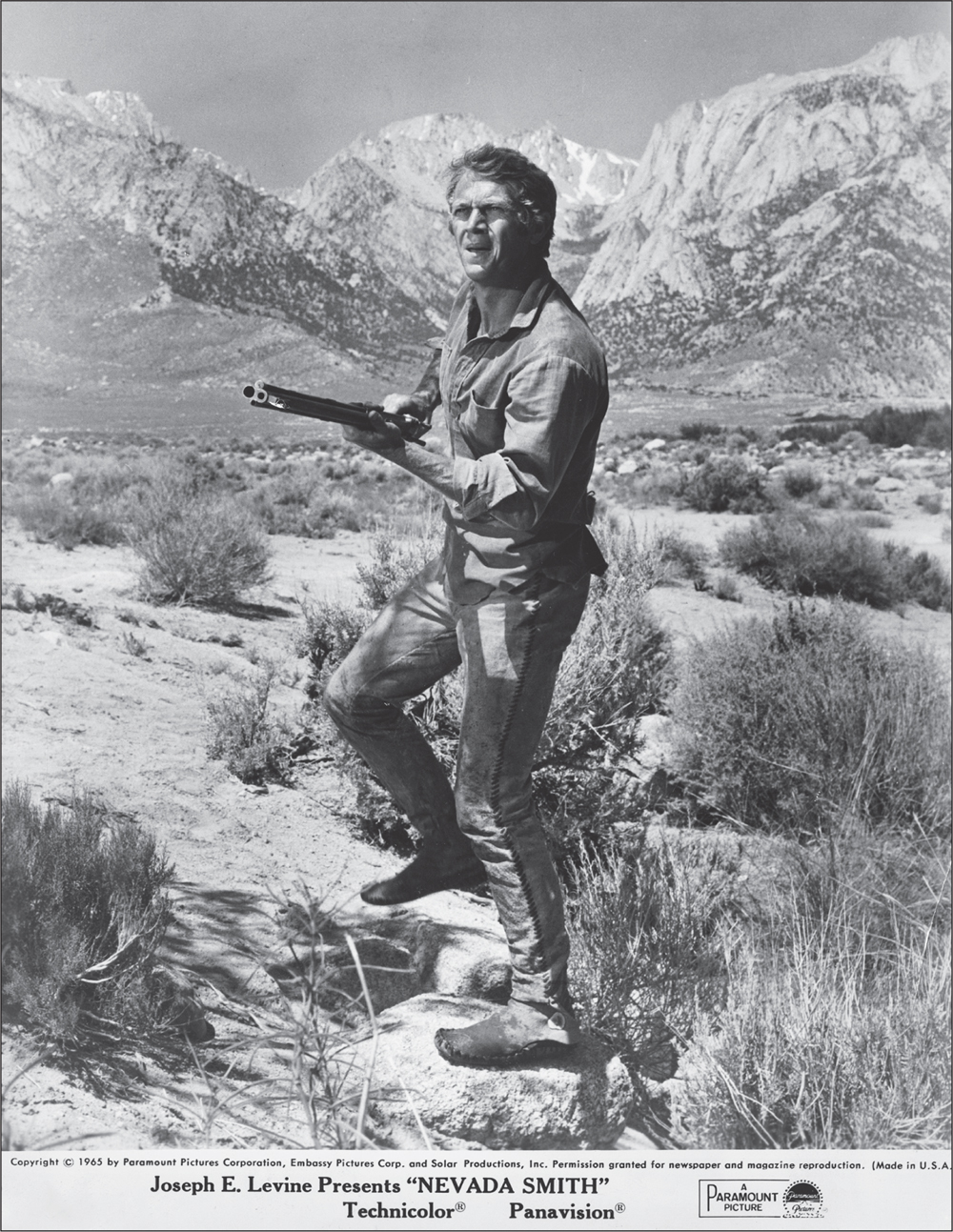
Steve McQueen was in the US Marine Corps and starred in the 1966 film Nevada Smith.
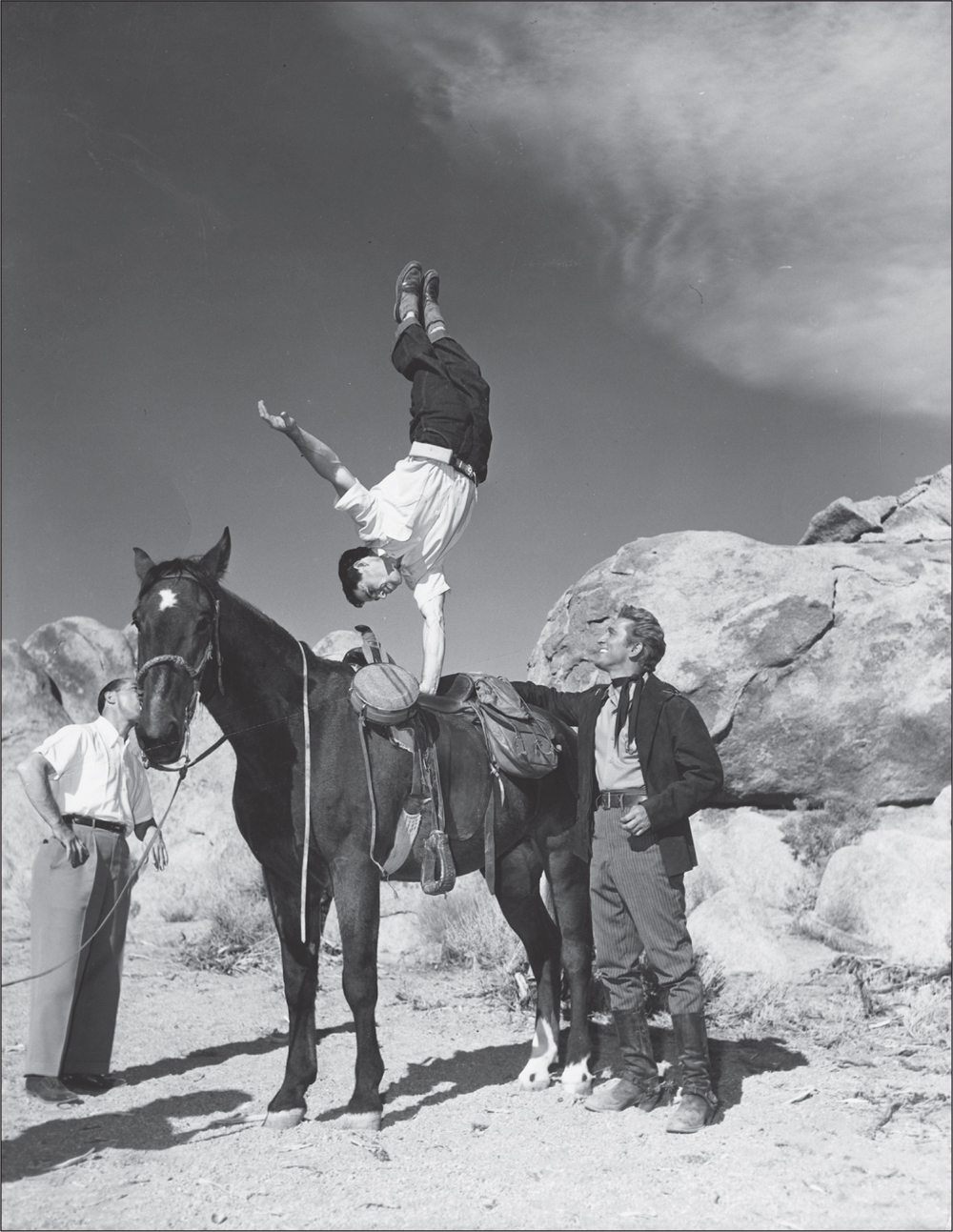
Along the Great Divide (1951) starred Kirk Douglas, a US Navy veteran, in his first Western, and Virginia Mayo. This location can be found near Lone Ranger Canyon. Robert Mitchum, another great actor, starred in the 1944 Western Nevada (which is the only film to mention a “lone pine” in reference to the town of Lone Pine), also filmed in the Alabama Hills. Mitchum was previously seen in the movie Riders of the Deadline (1943).
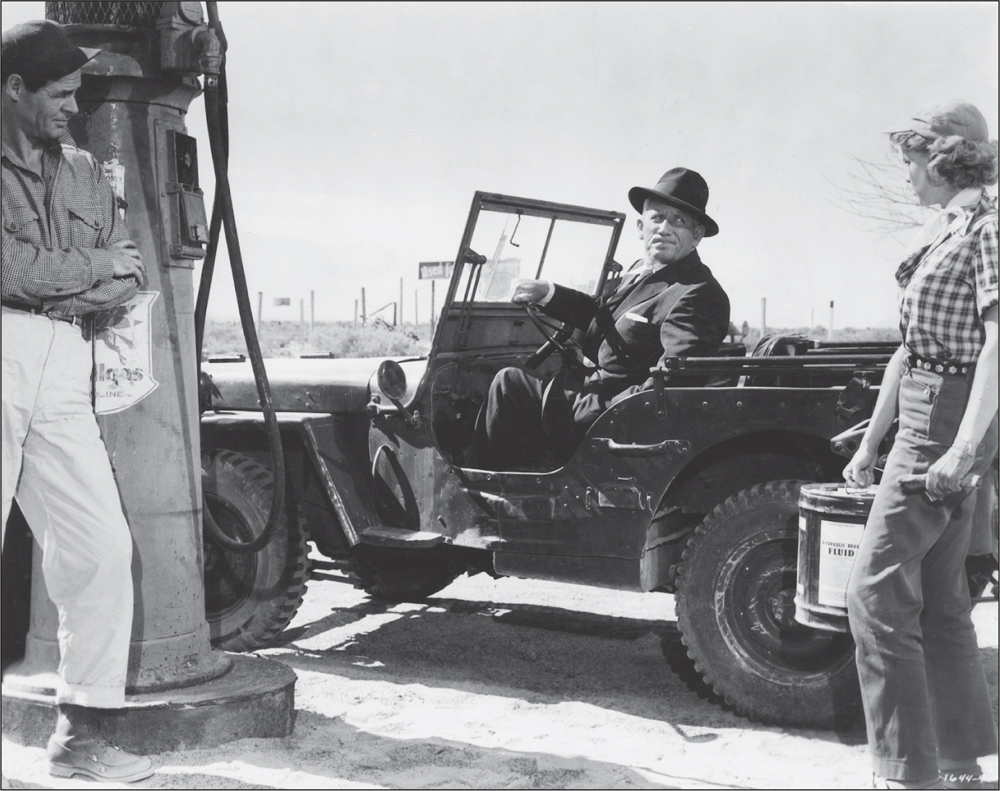
Bad Day at Black Rock (1955) was filmed east of Lone Pine and in the Alabama Hills. One of the scenes featured a Plymouth sedan driven by Ernest Borgnine, chasing a Willys jeep driven by Spencer Tracy. Robert Ryan and Lee Marvin were in the US Marine Corps and starred alongside US Navy veteran Ernest Borgnine in the colorized suspenseful film noir.
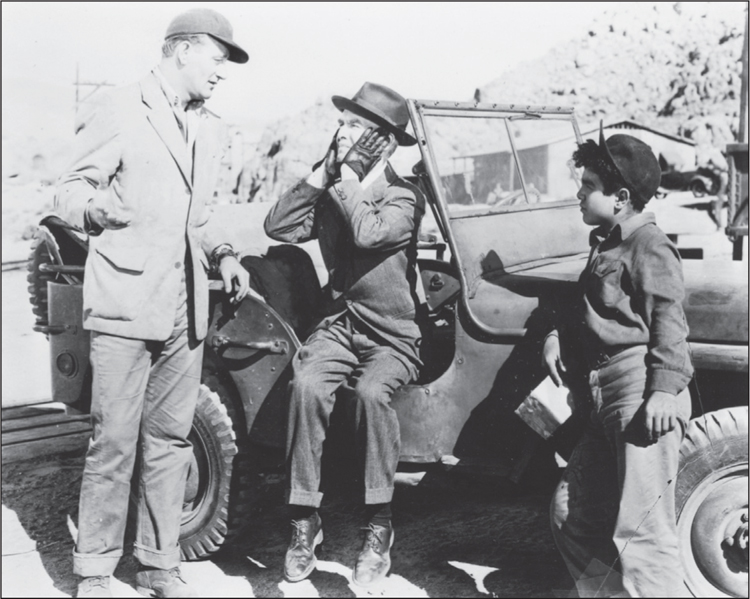
This image is from Tycoon showing a Willys jeep like the one in Bad Day at Black Rock in 1955. The Willys jeep was reliable in wartime as well as in movies filmed in the Alabama Hills. This location is in the Ruiz Hills area.




















